
A Life-Changing Experience In Iceland
Although I was born and raised in Denmark, visiting Iceland has always felt like coming “home”.
My first visit to Iceland as a photographer was in the fall of 2015, where my adventures began in the east. I had spent three days on the ferry from my home country and I was hungry to start photographing. Having been accustomed to the flatness of the Danish landscapes, my visit to Iceland seemed somewhat out of this world! I felt a mix of freedom, joy and creativity, which I had never experienced before.
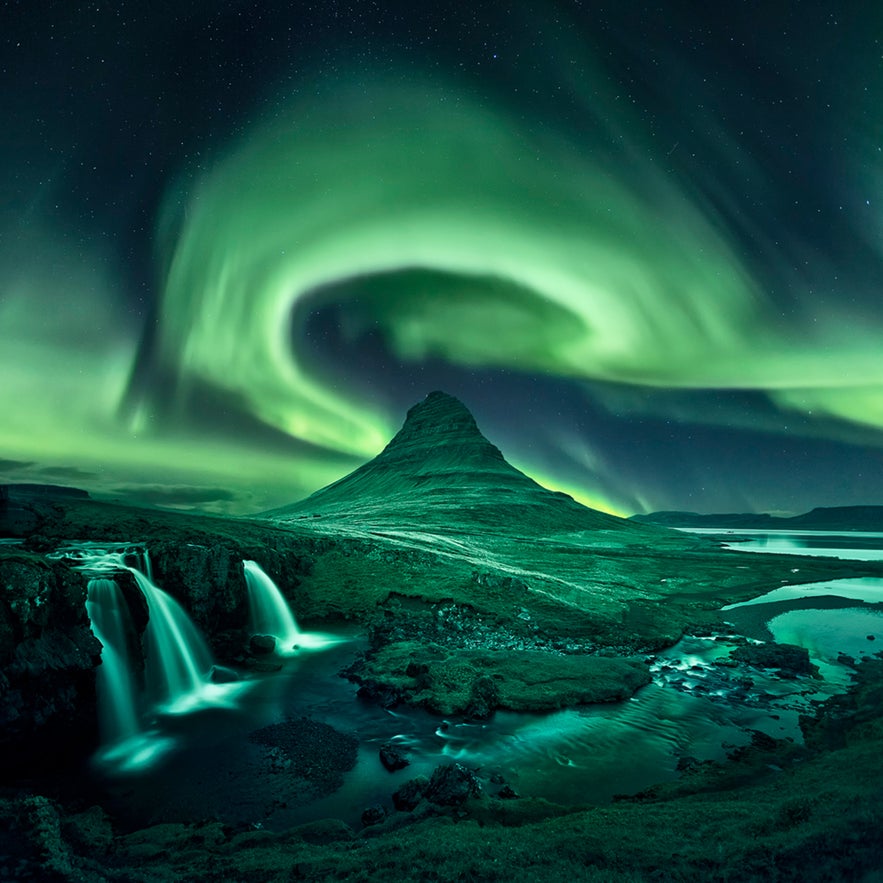
It was a day of ‘firsts’. On my first day in Iceland, I made my first trip to a major waterfall, Hengifoss. In fact, it was also my first sunset in Iceland, which I spent at Selfoss waterfall, as well as the first time I had ever witnessed the magnificent Northern Lights.
On this first night, I spent four hours walking around the top of Hverfjall, a volcanic crater in the north of Iceland, photographing the very active Aurora. It is safe to say that it was an extraordinary existential experience that got me hooked as a landscape photographer.
 Northern Lights over Hverfjall Crater. Photo by: 'Mads Peter Iversen'.
Northern Lights over Hverfjall Crater. Photo by: 'Mads Peter Iversen'.
On the following days, I visited iconic locations such as Aldeyjarfoss, Goðafoss, Hvítserkur and the entire Snæfellsnes peninsula. Visiting Aldeyjarfoss was a huge experience for me, since I had the entire location to myself during sunrise.
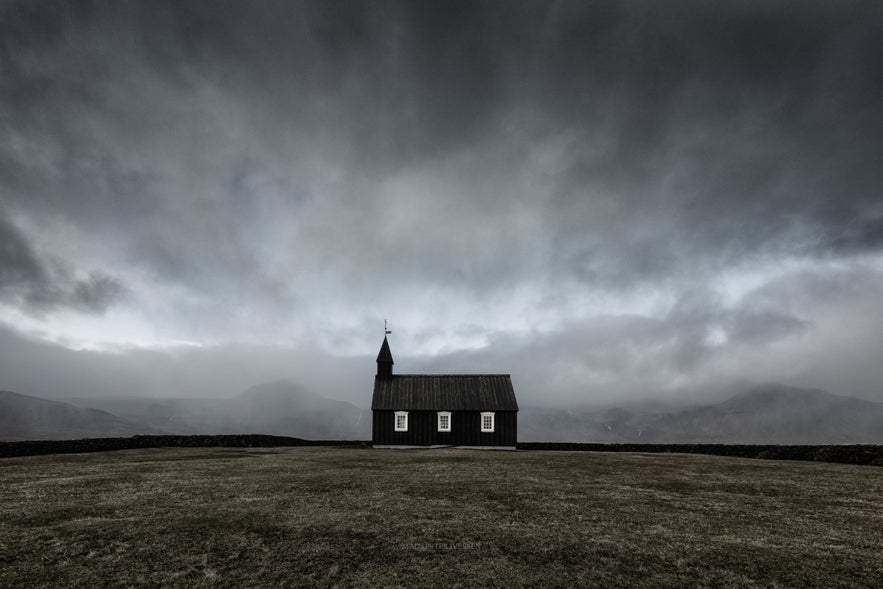 Black Church of Budir. Photo by: 'Mads Peter Iversen'.
Black Church of Budir. Photo by: 'Mads Peter Iversen'.
Seeing Kirkjufell at the Snæfellsnes peninsula was somewhat akin to the feeling you get when you see your favourite rock band for the first time. This legendary location has, for good reasons, become one of the most visited for photographers in Iceland. Shaped like a pyramid, Kirkjufell is very characteristic and unique to the Icelandic landscape. A lot of its fame has come from being used as a backdrop in the TV-series, ‘Game of Thrones’.
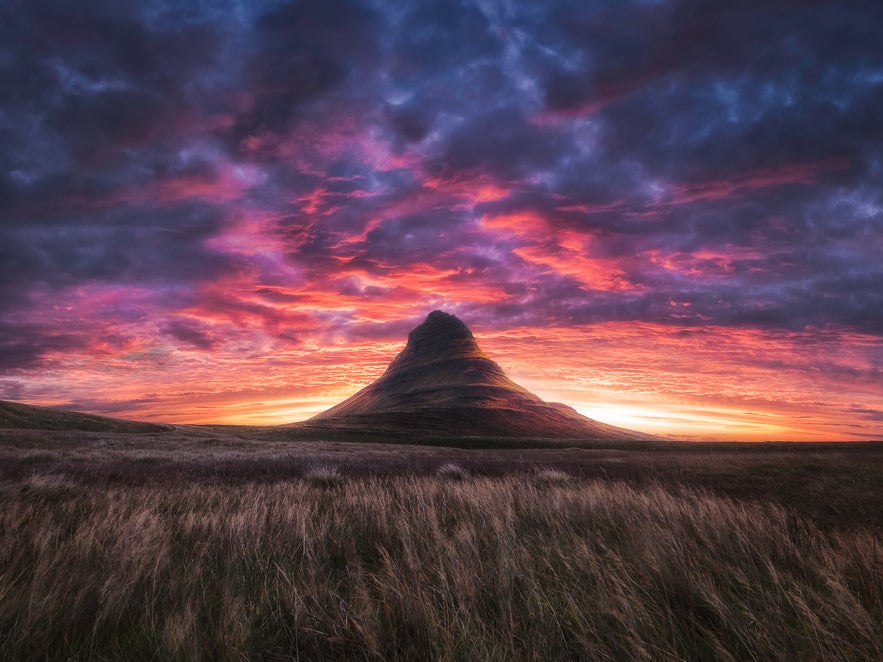 Kirkjufell. Photo by: 'Mads Peter Iversen'.
Kirkjufell. Photo by: 'Mads Peter Iversen'.
After spending some days in Reykjavík with friends, I moved on along the southern coast of Iceland and spent a couple of days at Skógar. Here, I visited the famous Seljalandsfoss, Skógafoss, Dyrhólaey, the crashed DC3 plane and the black beaches at Vík with the famous sea stacks of Reynisdrangar.
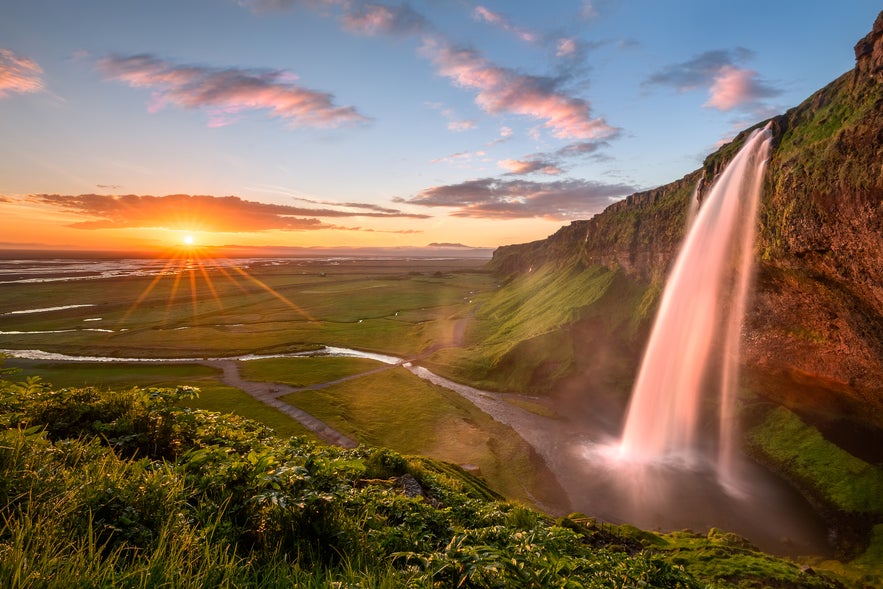 Seljalandsfoss at Sunset. Photo by: 'Mads Peter Iversen'.
Seljalandsfoss at Sunset. Photo by: 'Mads Peter Iversen'.
Those days were mainly grey, windy and wet, but from time to time, there was a lot of texture in the clouds, providing a point of interest to the landscape. It was during this stormy weather at Reynisdrangar that I took one of my favourite photos from the entire trip.
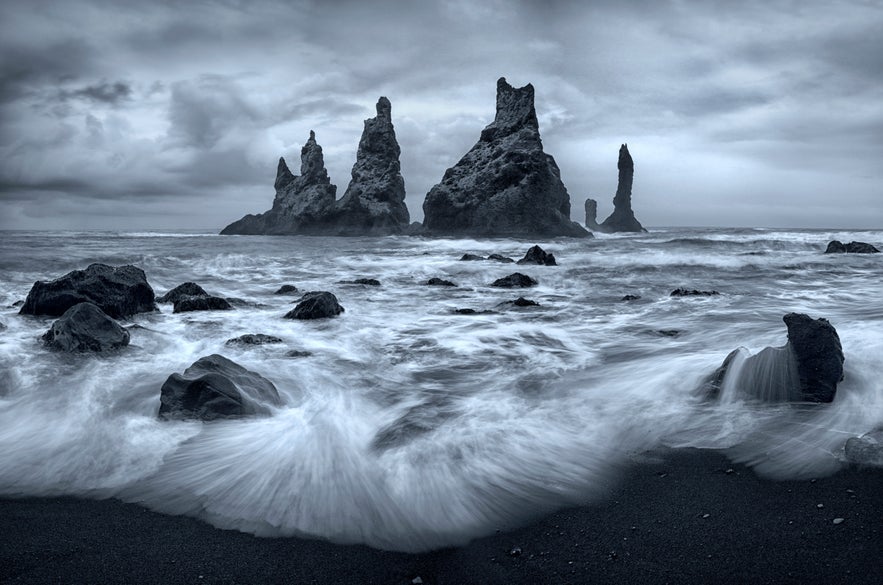 Reynisdrangar Sea Stacks. Photo by: 'Mads Peter Iversen'.
Reynisdrangar Sea Stacks. Photo by: 'Mads Peter Iversen'.
Skógafoss never disappoints. The waterfall is epic, even in extreme conditions with gusts and rain. During the night, you’ll probably be able to see the Northern Lights dancing above it. During the day, if you are lucky enough to have clear weather , then you may even be able to photograph a rainbow in front of it. I, myself, have yet to fully experience all of what the majestic Skógafoss has to offer.
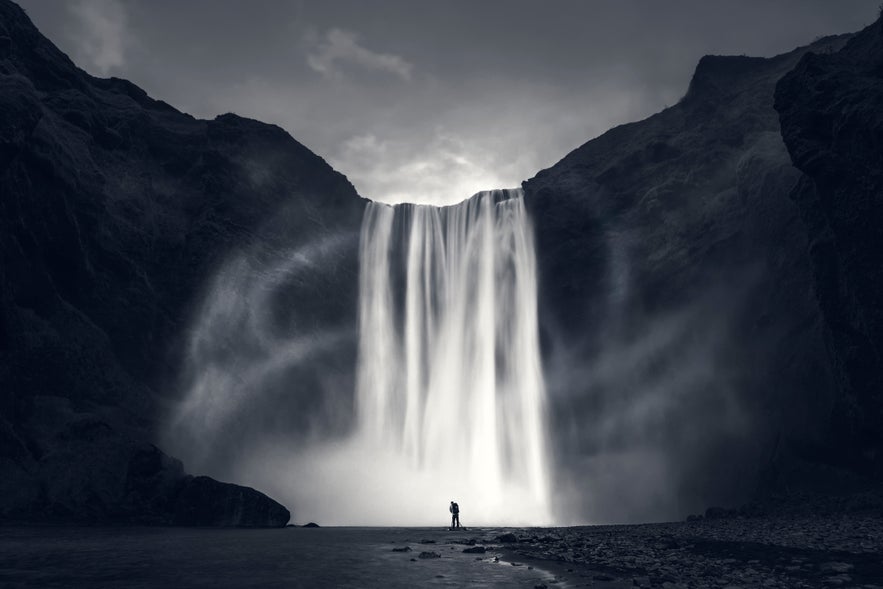 Skogafoss. Photo by: 'Mads Peter Iversen'.
Skogafoss. Photo by: 'Mads Peter Iversen'.
Driving further east through the vast and sooty volcanic terrain of the Highlands, I made my way to the iconic Svartifoss waterfall in the Skaftafell National Park. I love how the dark, rough and hexagonal-shaped basalt columns makes for a contrast to the white falling water. If you’re here during autumn, you’ll also experience the beautiful yellow, orange and red colours of fall.
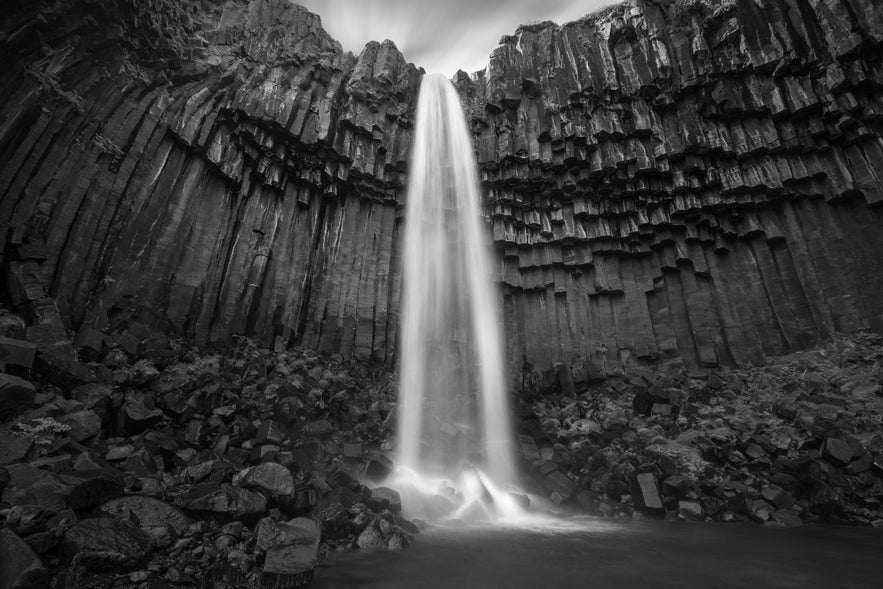 Svartifoss in the Skaftafell Nature Reserve. Photo by: 'Mads Peter Iversen'.
Svartifoss in the Skaftafell Nature Reserve. Photo by: 'Mads Peter Iversen'.
On the last part of journey through the Land of Ice and Fire, I visited both the famous glacier lagoon, Jökulsárlón, and another iconic photography location, Stokksnes, home to the stunning mountain of Vestrahorn. Above the glacier lagoon, I witnessed my last show of the Aurora after having waited for a couple of hours along the shore. I could hear the joy from all the other photographers located around the lagoon when the Northern Lights finally exploded – it was quite a funny experience.
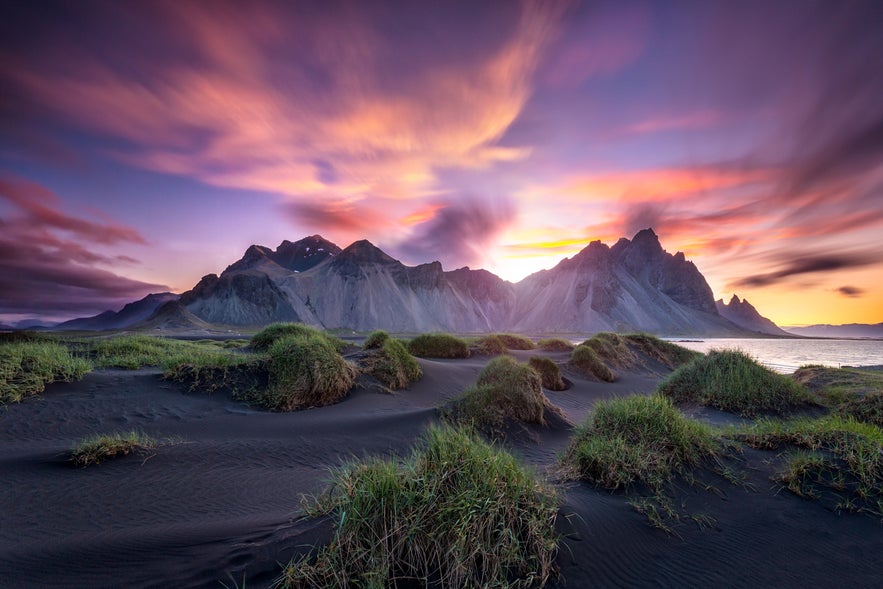 Vestrahorn. Photo by: 'Mads Peter Iversen'.
Vestrahorn. Photo by: 'Mads Peter Iversen'.
On the other side of the road from Jökulsárlón, there is the famous “Diamond” beach or Ice Beach, where the ice from the glacier lagoon floats out into the ocean and gets pushed back onto the beach by the waves. This is another unique location for photography in Iceland!
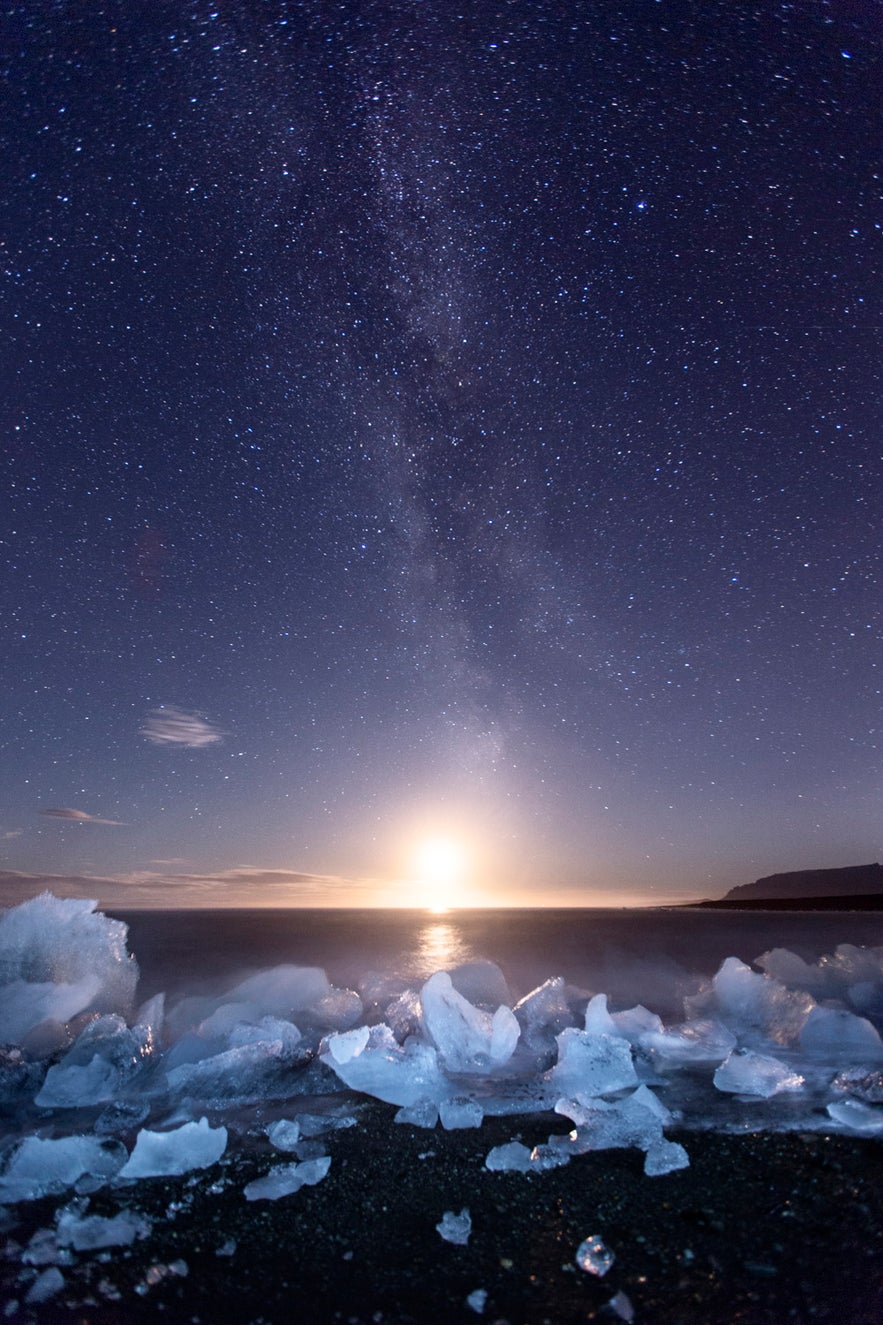 Diamond Ice Beach. Photo by: 'Mads Peter Iversen'.
Diamond Ice Beach. Photo by: 'Mads Peter Iversen'.
Meanwhile, at Stokksnes, you’ll find yourself akin to being in a candy shop of photographic compositions. Beside the iconic stretch of mountains, there is also a long beach, which makes for some stunning reflections. The black sand and tall grass adds to the scene here. If this foreground doesn’t appeal to you, then that’s no problem – there is also a large area covered only by sand.
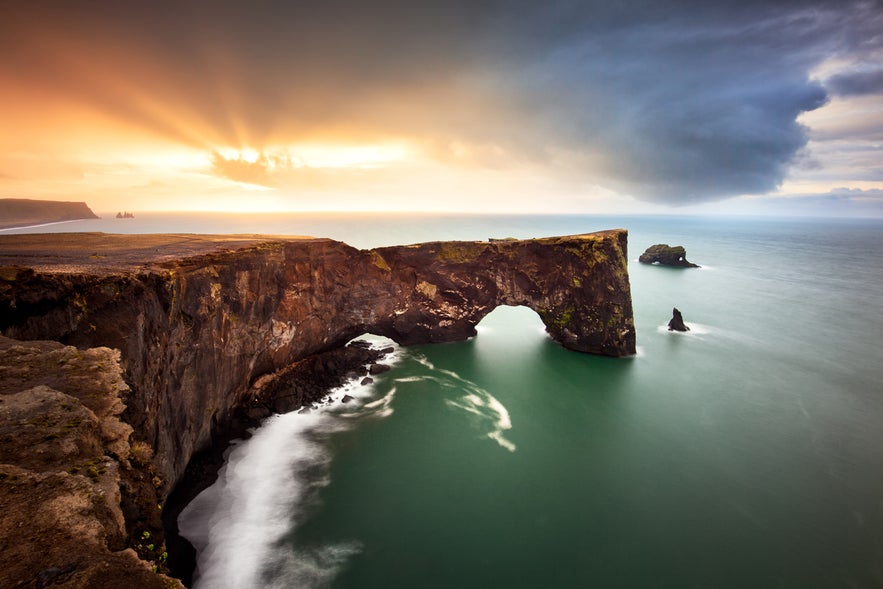 Snaefellsnes Peninsula. Photo by: 'Mads Peter Iversen'.
Snaefellsnes Peninsula. Photo by: 'Mads Peter Iversen'.
Since this first life-changing experience through Iceland, I have visited the country on camping trips during the summer and again in autumn. During these months, it isn’t as cold in Iceland as some might think. I have yet to experience the country during winter, but it’s something I am looking very much forward to.
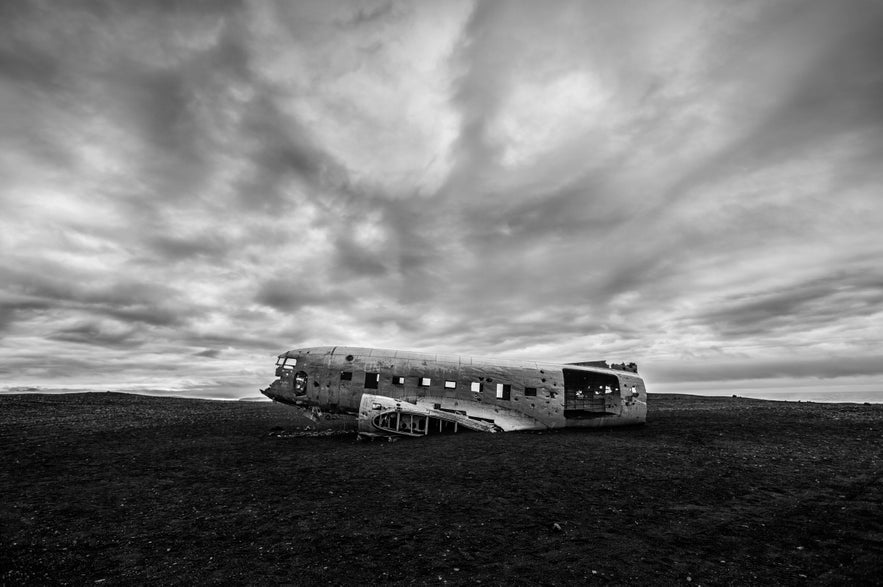 DC3 Plane Wreck in Iceland. Photo by: 'Mads Peter Iversen'.
DC3 Plane Wreck in Iceland. Photo by: 'Mads Peter Iversen'.
My first few journeys to Iceland have inspired me to make a series of landscape photography guide videos, where I cover most of the locations that I visited and provide lots of tips and tricks on photography in general too. I hope to share my photographic knowledge with all those who visit this country and look forward to seeing some of you on our tours!
For more information on Mads Peter Iversen’s work, visit his website, find him on Instagram or subscribe to his YouTube channel.
Join Mads on a 14-Day Aurora and Ice Caves Photography Workshop in Winter!
Other interesting blogs

Photographing Ice in Iceland
I have found that, in my many journeys to Iceland, photographing the ice tends to drive my passion like no other landscape. The ever-changing colours, shapes, and luminosity of the ice, create a primЧитать далее
This is Why Everyone Wants to go to Iceland
Iceland is booming. More than 2 million tourists visit Iceland every year. This comes as no surprise. As I am regularly guiding tours in Iceland I have visited the country quite some times over the yeЧитать далее
Falling in Love with Iceland
It was a regular day back in June of 2012, I was having some drinks with a couple of my best buddies talking photography. We had always planned a trip to visit Iceland, for one reason or another our pЧитать далее
















